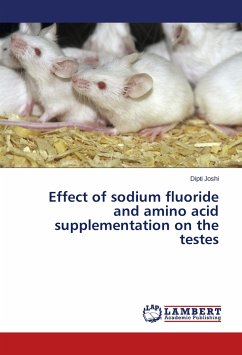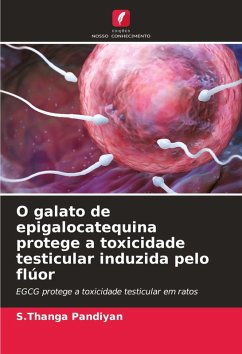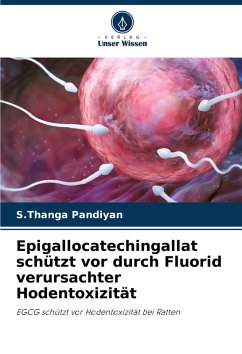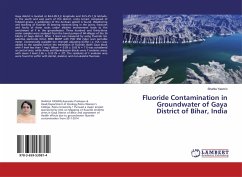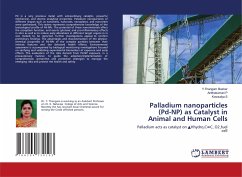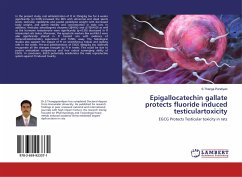
Epigallocatechin gallate protects fluoride induced testiculartoxicity
EGCG Protects Testicular toxicity in rats
Versandkostenfrei!
Versandfertig in 6-10 Tagen
24,99 €
inkl. MwSt.

PAYBACK Punkte
12 °P sammeln!
In the present study, oral administration of Fl at 25mg/kg bw for 4 weeks significantly (p0.05) increased the ROS with abnormal and dead sperm levels, testicular, epididymis and caudal epididymis weight with decreased body weight, and sperm motility and concentration in male rats. In addition, testicular steroidogenic enzymes (3beta-HSD and Delta17beta-HSD) as well as the hormone testosterone were significantly (p0.05) decreased in Fl intoxicated rats testes. Moreover, the apoptotic markers Bax and Bcl-2 were also significantly altered in Fl treated rats with evidence of immunohistochemistry e...
In the present study, oral administration of Fl at 25mg/kg bw for 4 weeks significantly (p0.05) increased the ROS with abnormal and dead sperm levels, testicular, epididymis and caudal epididymis weight with decreased body weight, and sperm motility and concentration in male rats. In addition, testicular steroidogenic enzymes (3beta-HSD and Delta17beta-HSD) as well as the hormone testosterone were significantly (p0.05) decreased in Fl intoxicated rats testes. Moreover, the apoptotic markers Bax and Bcl-2 were also significantly altered in Fl treated rats with evidence of immunohistochemistry experiment and TUNEL assay. The histological studies also support the impact of Fl on seminiferous tubule and leyding cells in the testes. Pre-oral administration of EGCG 40mg/kg bw distinctly recuperate all the changes brought by Fl in testes. This could be due to potent antioxidant competence and free radical scavenging ability of EGCG. In conclusion, EGCG potentially ameliorates the male reproductive system against Fl induced toxicity.




